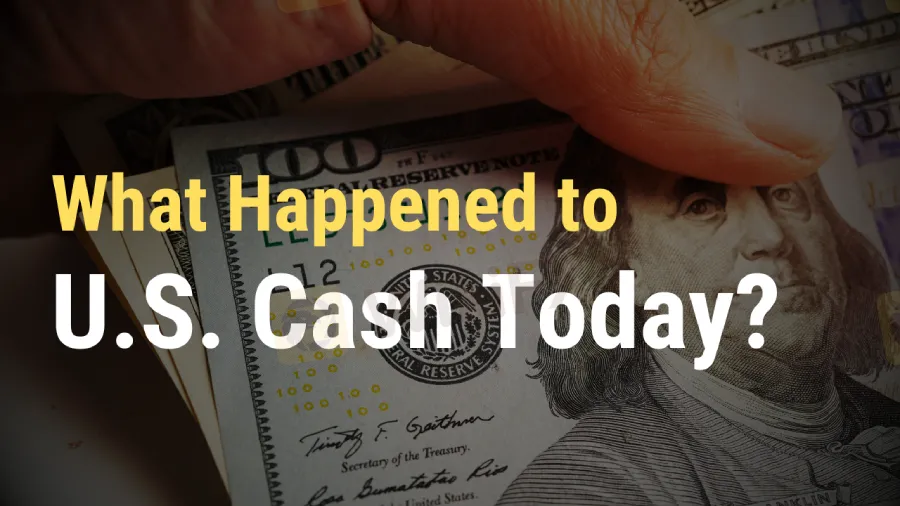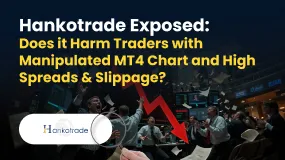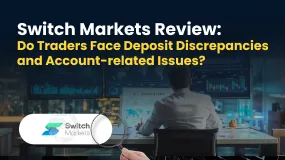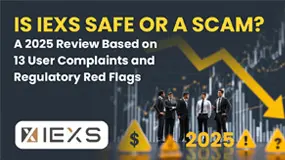简体中文
繁體中文
English
Pусский
日本語
ภาษาไทย
Tiếng Việt
Bahasa Indonesia
Español
हिन्दी
Filippiiniläinen
Français
Deutsch
Português
Türkçe
한국어
العربية
What Happened to U.S. Cash Today?
Abstract:Uncover the transformation of U.S. currency, from traditional paper notes to emerging digital forms, in this insightful article on America's monetary evolution.

The Federal Reserve intends to spend $931.4 million on printing banknotes in 2023. This statistic begs the question, “Does the US cash system need to be overhauled?” At the core of the problem is the fact that, unlike many other countries, the United States has not updated its currency. This unwillingness to change might be a major blunder.
For example, there is a rising case for the United States to replace paper currency with dollar coins. Physical money has developed globally, with several nations adopting more durable forms, such as polymer notes, which endure substantially longer than paper. However, the United States has continued to utilize conventional paper money.
This commitment to paper notes is noteworthy, particularly given that a rising number of Americans are abandoning cash in favor of electronic payments. According to Pew Research Center research, 41% of Americans did not use cash in a normal week in 2022, a considerable rise from 29% in 2018. Despite this tendency, there is more currency in circulation than ever before, and its production grows by 1.5 to 2% every year.
The present condition of US money is a complicated blend of increasing digital transactions and ongoing cash use. While the government actively participates in electronic commerce, it is still the body in charge of producing money. This dual function illustrates a distinguishing feature of the United States financial system: the coexistence of digital and physical monetary types.

The circulation of various denominations is one of the most striking indicators of the status of the US currency system. The $100 note has eclipsed the $1 bill, which was formerly the most popular. There are now 18.5 billion $100 bills in circulation, demonstrating the worldwide function of US money as a store of wealth. However, given the privacy that cash transactions provide, the adoption of greater denominations such as the $100 note raises worries about their usage for tax evasion or illicit activity.
The development of the US dollar displays intriguing historical themes. The $2 note and half-dollar coin, which were formerly widespread, have fallen out of favor in ordinary transactions, owing in part to their removal from vending machines and cash registers. Furthermore, when checks and credit card payments grew more common, the United States phased out bigger denominations such as $500 and $1000 notes.
The creation of US money is a huge undertaking. The Bureau of Engraving and Printing, which is overseen by the US Treasury, is in charge of paper notes, while the US Mint is in charge of coinage. According to the cost breakdown of generating paper bills, 28% of the cost is given to materials such as paper and ink, while 63% is dedicated to manufacturing overhead, research, and engraving. The endurance of US banknotes, constructed of a linen and cotton mix, pales in contrast to the lifetime of metal coins, which may survive up to 30 years in circulation.

Globally, there is a trend toward more durable money forms, such as smaller-value coins and polymer notes. Australia, Japan, and several European countries have adopted these developments. The United States, on the other hand, has been reticent to undertake a comparable change. Attempts to introduce $1 coins and reinstate the $2 note in the past have failed, owing primarily to popular choice and the fiscal implications of such a changeover.
The argument about the effectiveness of coinage vs paper money continues. While coins may be more durable and cost-effective in the long term, the United States has resisted this transformation for a variety of reasons, including vendor special interests and the unique qualities of the United States as a global currency player.
Concerns have also been raised about the environmental effect of printing paper notes, which often use hazardous ink for anti-counterfeiting procedures. However, there is substantial opposition in the United States to the use of dollar coins or polymer notes. This opposition may be linked in part to the Federal Reserve's policies and the larger financial environment, where digital transactions are becoming more common.
Modernizing currency is a difficult task. Banknotes are sophisticated tools, and combining technology breakthroughs such as blockchain connections might change the way we use money. However, many companies continue to accept both electronic and cash payments, and novel methods to bridge the digital-physical money divide are developing.
The argument over the future of cash continues as the United States grapples with the changing environment of money and payment systems. Should the United States follow global trends and shift to more lasting, environmentally friendly monetary forms? Or should it continue to strike a balance between digital and old payment methods? These are concerns that not only reflect economic considerations but also cultural choices and financial technology improvements.
Cash's place in American culture will surely continue to develop as a result of a mix of popular choice, technological progress, and economic reality. The transition of US currency from paper notes to possibly more contemporary forms will be an important part of this development, reflecting the changing dynamics of money in a digital age.

Disclaimer:
The views in this article only represent the author's personal views, and do not constitute investment advice on this platform. This platform does not guarantee the accuracy, completeness and timeliness of the information in the article, and will not be liable for any loss caused by the use of or reliance on the information in the article.
Read more

Hankotrade Exposed: Does it Harm Traders with Manipulated MT4 Chart and High Spreads & Slippage?
Have you witnessed a manipulated MT4 chart on Hankotrade login, showing inaccurate trading figures? Have you been victimized by high swap fees, inflated spreads, and massive slippage? Is the payment processing time too long at Hankotrade? Do you face downtime issues, especially when the New York trading session is on? These are some top complaints against the Belize-based forex broker. In this article, we have shared these complaints. Take a look!

Cloudflare Outage Disrupts Broker Websites and Crypto Platforms
Cloudflare outage causes widespread disruption to broker websites and crypto platforms, highlighting risks in web infrastructure reliance.

Switch Markets Review: Do Traders Face Deposit Discrepancies and Account-related Issues?
Do you fail to deposit your funds into the Switch Markets forex trading account? Earned profits, withdrew them too, but did Switch Markets block your deposits? Wanted to close your trading account due to payment-related issues, but in turn got your emails blocked by the Australia-based forex broker? Faced a negative trading account balance because of illegitimate trade order execution? Many traders have shared these stories about Switch Markets on broker review platforms. In this Switch Markets review article, we have mentioned the same. Read on!

Is IEXS Safe or a Scam? A 2025 Review Based on 13 User Complaints and Regulatory Red Flags
You're asking a direct and important question: Is IEXS safe or a scam? As someone who might trade with them or already does, this is the most important research you can do. While IEXS says it is a global broker with over ten years of experience, a detailed look at its regulatory status and many user reviews shows serious warning signs that cannot be ignored. The evidence suggests a high-risk situation for traders' capital. This review will examine the available information, from official regulatory warnings to concerning first-hand user complaints, to give you a clear and fact-based view of the risks involved in trading with IEXS. Our goal is to give you the facts you need to make a smart decision.
WikiFX Broker
Latest News
IEXS Review 2025: A Complete Expert Analysis
IEXS Regulation: A Complete Guide to Its Licenses and Safety Warnings
【WikiEXPO Global Expert Interviews】Ashish Kumar Singh: Building a Responsible and Interoperable Web3
CySEC Flags 21 Unauthorized Broker Websites in 2025 Crackdown
CQG Partners with Webull Singapore to Power the Broker’s New Futures Trading Offering
WinproFx Withdrawal Problems: A Complete Look at Delays and User Reports
Factory Orders Data Show Rebound In August
Interactive Brokers Expands Access to Taipei Exchange
Simulated Trading Competition Experience Sharing
WinproFx Regulation: A Complete Guide to Its Licensing and Safety for Traders
Currency Calculator



